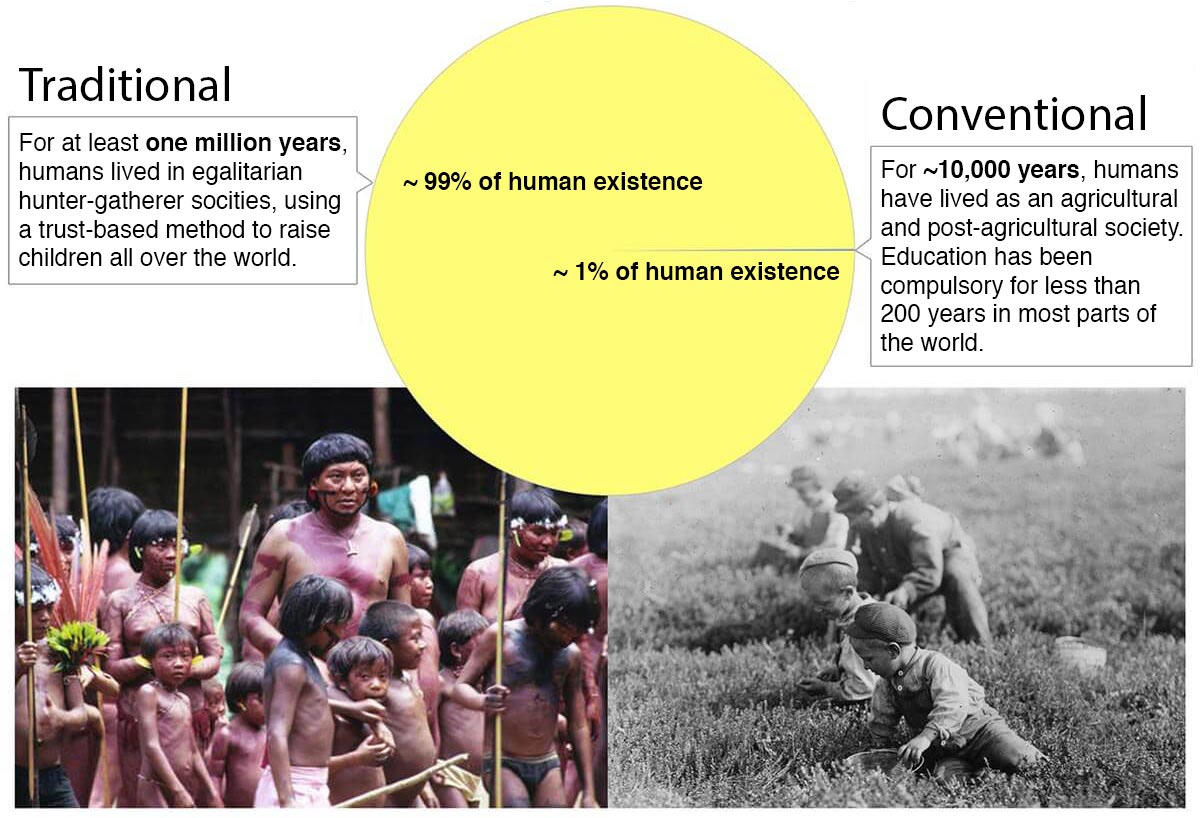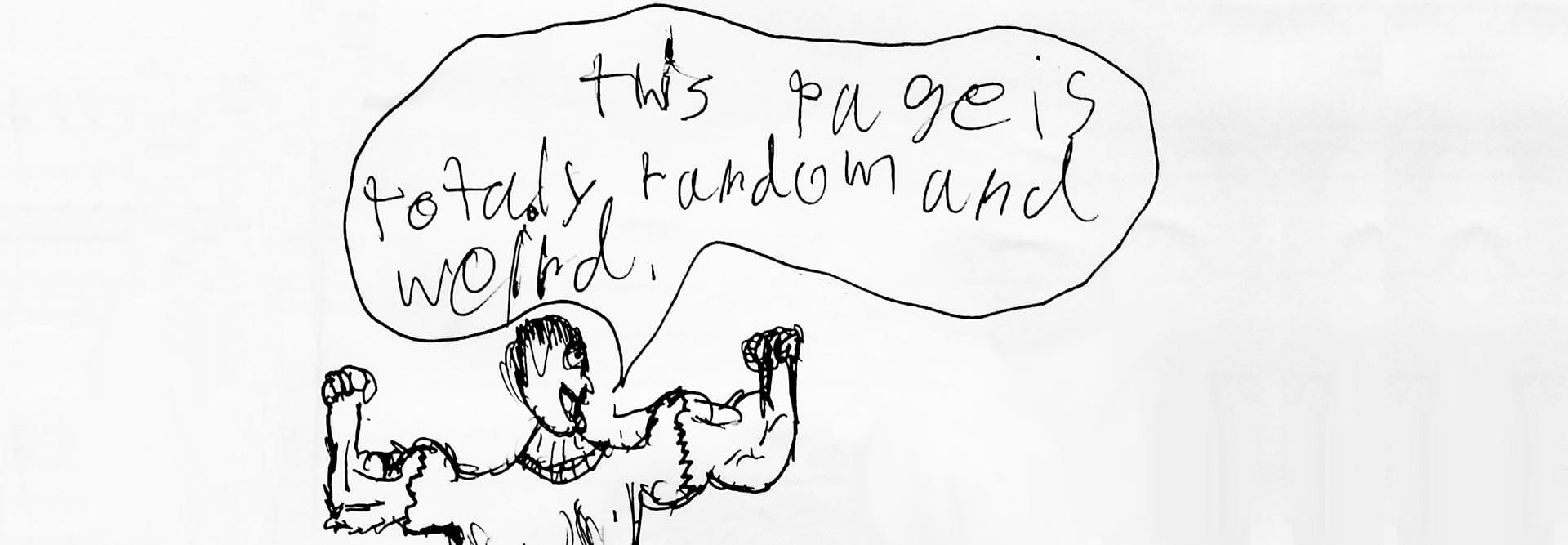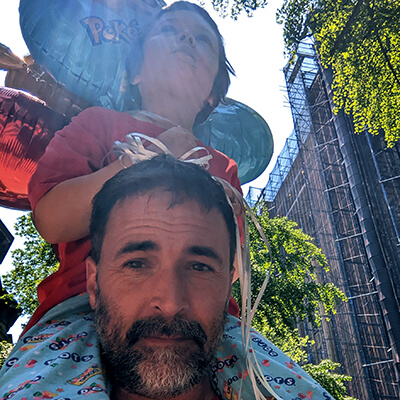I grew up being an “ah, you know what I mean,” kind of a person, using words in the same manner as I consume sandwiches at my rushed lunchtime at the SDE center I work at: just get something in there and make it work. That meant that I often used dangerously inaccurate words that I slowly realized were causing a lot of misunderstandings and a lot of miscommunication (along with a lot of peanut butter and jelly sandwiches).
As I have grown older, I have started to realize the importance of using the right words and just how powerful words can be in shaping how we think or even if we think. This has been especially concerning to me as I talk about, read about, and have conversations about Self-Directed Education. With that in mind, here are three words often misused in Self-Directed Education, their proper substitutes, and why:
Replace “Traditional” With “Conventional”
By far, the word I hear and read the most that I believe is being misused is the word “traditional.” In the context of Self-Directed Education, this word is typically used when one is trying to talk about the current form of education that most children receive — a public school education and the private school, charter school, and alternative school counterparts that fit under that umbrella term. I differentiate these models from Self-Directed Education by lumping the former into “fear-based” and the latter into “trust-based” education. In other words, those that ask, “But what if they don’t learn to read?” versus, “So long as they are in a healthy environment, they will learn to read when (if) they find a need for it.”
But what is wrong with using the word “traditional” to describe that fear-based model? The answer is quite simple and the misuse is quite powerful. “Traditional” describes a long standing custom that is passed down from one generation to the next. The purpose of traditions is to help bring meaning and stability and to give us a sense of belonging and everlasting purpose among our communal family and society at large. Do we really want to use a word like that to describe the oppressive fear-based model of education that currently so many youth must, at best, endure in order to reach adulthood? And moreso, is it even accurate?
If tradition is something that survives over generations, then the method of learning that should be described as “traditional” should actually be Self-Directed Education. As the researcher and scholar Peter Gray wrote,
All humans were hunter-gatherers until a mere 10,000 years ago, when agriculture first appeared in some parts of the planet. In other words, for about 99% of our million or so years on earth (more or less, depending on just how you want to define “human beings”) we were all hunter-gatherers.... Hunter-gatherers believed that it is presumptuous for anyone to think that they know what is best for another person. So, they did not “teach” in the sense of trying to get their children to do things that the children were not already motivated to do.
In that article, Peter then goes on to describe many of the ways in which hunter-gatherer children did learn, describing a trust-based, self-directed model, including time to play and explore, providing but not requiring that children use the tools of their society, and so on. He concludes, “The most important and general way by which hunter-gatherer adults helped their children learn was by providing an always supportive, always trustful environment.” As Peter points out in other posts and in his famous book Free to Learn, this sounds a lot more like Self-Directed Education than the fear-based public school model and all of its alternative spinoffs do.
And therefore, when describing a modern day public school education, I propose we replace the powerful word “traditional” with the appropriate word, “conventional,” that is, what is popular today, not what is long-standing. In doing so, we will help take back the long history of self-led education and help communicate to others that public school is nothing more than the current fad (that hopefully will soon fade away).

“Public Schooling” is Not “Public Education”
This might be a bit more obvious to most Tipping Points readers, but it is essential to point out when discussing the misuse of words around the topic of Self-Directed Education.
Self-Directed Education can often be misunderstood as an attack on public education, that is, free and accessible education for all. I hear this argument a lot when talking to public school teachers and administrators and parents. Of course, nothing could be further from the truth; I think it is safe for me to say that most if not (hopefully) all in the Self-Directed Education movement want education to be publicly free and accessible to all.
This short quote from Ivan Illich’s book Deschooling Society hits right at the heart of the difference, “We cannot begin a reform of education unless we first understand that neither individual learning nor social equality can be enhanced by the ritual of schooling.” The word “schooling” means to use that same fear-based method of forcing information onto learners. Unfortunately, it happens to also be the only method that currently receives public funding in nearly all places (and sadly, the few instances I have heard of where SDE centers have received public funding usually also means a short lived existence, such as this sad story).
Since public schooling generally holds a monopoly on public funding and conventionally is assumed to be the only method through which one can learn, of course there is a misunderstanding that Self-Directed Education is an attack on free, publicly accessible education. It is true that without public funding, Self-Directed Education often requires at least sliding scale models of tuition at centers or a method in which one parent can stay home with younger children to help facilitate their learning. Of course, that does not at all mean that SDE supporters are against public education, only that they are against forced, oppressive schooling.
It is also important to point out that some free models have existed, such as the GROW SDE, tuition-free cooperative unbusiness model created by Dr. Sundiata. If you’re interested in how this can be accomplished, his video, “How To Start A Tuition-Free ALC/Unschool Cooperative UnBusiness,” is a great place to start:
“Self-Structure” Does Not Mean “Lack of Structure”
I remember a moment years ago when, as we watched our children play together, a parent standing next to me at a local playground asked me where my kids go to school. When I answered with the name of the school, they gave me a blank stare, and so, I followed up my answer with a quick explanation of the school and what Self-Directed Education is. I received the ever too common reply, “Oh, my child could not go to a school like that; they need structure.” I replied something along the lines of, “Actually my kids’ school has a lot of structure– a lot more structure than any conventional school has– it’s just structure that is decided by the whole community, that they all have the power to change at any given time. What most parents mean when they say their child needs structure is that their child needs to be told what to do.” That was the moment that I learned how to not make parent friends on the playground.
Since then I have softened my response, but the point is still true: most SDE environments, including unschooling homes, require a lot more structure than any authoritarian space where all one needs to do is to listen to the power above. And yet, I still hear words like “no structure” used in the SDE world to describe what it is we do (and don’t get me started on the misuse of the word “anarchy” as it is wrongly equated with “chaos!”) It takes a lot more effort to communicate to the entire community / family, to negotiate one’s needs, to find solutions that work for all, not just for the authority (or even the ruling majority). That effort means that more structure needs to be in place in order for it to work, such as communal agreements, open communication, ways of resolving conflicts that promote mutual aid, and so on. And so, I urge you to consider using phrases such as “self-structured” or “community-built structure” in place of any notion of lack of structure.
Bonus Word: “Studenting”
I said I would offer three replacement words, and I did. However, I am going to offer one more word that does not have a replacement because it is a new word: studenting. I came up with the term when I was working on my Master’s Degree at Parsons School of Design at the New School University. I was both taking classes and also teaching classes at the same university (my method for remaining debt free, since the university offered a free class for every class taught). I worked in three departments and took classes in two others, and so, over the many years it took me to complete my degree, I started to get to know everybody — I mean, everybody! And so, it became a common occurrence during passing time when someone would say hello and ask me where I was going. “To class,” I would often reply, to which I would sometimes receive a second question, “To teach?” When it was a class for my Master’s I would often times find myself at a loss of words for an answer, “No, to...?” What was it called when I was the student? “To learn” sounded a bit too... righteous? The right answer was that I was going to class to student.
It was at this point that I realized that the English language only has a passive noun of being a student and no action verb for studenting. And so, I decided to make it up and to start using it, “No, I am studenting,” I would smile back (admittedly, often to a confused frown in response). As I have traveled the world, I have regularly asked others if there is a verb in other languages for the act of being a student separate from “learning.” In nearly all cases, I was told that there was not (apparently there are two words in French and one of them comes close to “studenting?” But I don’t remember the word and have no idea whether or not that is accurate...)
The point is that even our language fails us by making the learner passive and the teacher active (or even, the dichotomy of the two). For Self-Directed Education to become not only the “tradition” but also the “convention,” we need to start molding our minds into different ways of thinking, that is, deschooling ourselves. And how we think is impacted by the words we use. I encourage you to come along with me and to invent new words to shape our thoughts as we all forge ahead in our life-long learning, and for those moments where we choose to take on a mentor, for our studenting.
Oh, and if you know of a word for “studenting” in another language, please share it with me at alexander@self-directed.org. Thanks!
If you enjoyed this article and feel called to give back to ASDE, here are ways you can support our work:
- Donate money
- Share our content with others! Click one of the buttons above to easily share on Twitter, Facebook, or email.
- Consider becoming a Contributor for Tipping Points
Tipping Points Magazine amplifies the diverse voices within the Self-Directed Education movement. The views expressed in our content belong solely to the author(s). The Alliance for Self-Directed Education disclaims responsibility for any interpretation or application of the information provided. Engage in dialogue by reaching out to the author(s) directly.






